- Choosing the Right Lavender Varieties
- English Lavender (Lavandula angustifolia)
- French Lavender (Lavandula dentata)
- Spanish Lavender (Lavandula stoechas)
- Other Lavender Varieties
- Ideal Growing Conditions for Lavender
- Sunlight:
- Soil:
- Watering:
- Temperature and Humidity:
- Pruning:
- Pest and Disease Control:
- Propagation Techniques for Lavender
- 1. Seed Propagation
- 2. Rooting Cuttings
- 3. Layering
- 4. Division
- Planting and Transplanting Lavender
- Planting Lavender from Seeds
- Planting Lavender from Cuttings
- Transplanting Lavender
- Watering and Feeding Lavender Plants
- Watering
- Feeding
- Pruning and Maintenance of Lavender
- When to Prune Lavender
- How to Prune Lavender
- Maintenance Tips for Lavender
- Dealing with Common Lavender Pests and Diseases
- Pests
- Diseases
- Harvesting and Using Lavender
- Harvesting Lavender
- Using Lavender
- Storage
- Questions and Answers:
- What is the best way to propagate lavender?
- Can lavender grow in pots?
- How often should I water lavender plants?
- What is the best time to harvest lavender?
- How do I care for lavender during winter?
- Videos: 5 Tips to Grow Perfect Lavender
Lavender is a beautiful and fragrant herb that is popular for its vibrant purple flowers and soothing scent. Whether you are a seasoned gardener or a beginner, growing lavender can be a rewarding experience. In this guide, we will provide you with tips on how to propagate, plant, and care for lavender plants.
Propagation is the process of growing new lavender plants from existing ones. One way to propagate lavender is through stem cuttings. To do this, select a healthy stem and cut it just below a leaf node. Remove the lower leaves from the cutting, leaving a couple of sets of leaves at the top.
Next, prepare a well-draining potting mix and moisten it. Dip the cut end of the stem in rooting hormone to encourage root development. Insert the stem into the potting mix and gently press it down. Place the pot in a warm and bright location, keeping the soil moist but not soggy. After a few weeks, the cutting will develop roots, and you can transplant it into a larger container or in the ground.
When it comes to planting lavender, it is important to choose a sunny location with well-draining soil. Lavender prefers sandy or loamy soil that is slightly alkaline. Ensure that the soil has good drainage, as lavender does not tolerate wet feet. If the soil in your garden is heavy clay, consider adding sand or gravel to improve drainage.
Water the lavender plants deeply but infrequently, once or twice a week depending on the weather. Allow the soil to dry out between waterings to prevent root rot. Avoid overwatering, as lavender is drought-tolerant and can survive in dry conditions.
In terms of care, lavender is a low-maintenance plant. It is resistant to pests and diseases and does not require frequent fertilization. You can apply a slow-release, balanced fertilizer in spring to promote healthy growth. Prune the lavender plants in early spring to remove the old flower stalks and encourage bushier growth.
By following these tips for propagation, planting, and care, you can grow beautiful and thriving lavender plants in your garden. Enjoy the beauty and fragrance of lavender, and reap the benefits of its calming properties.
Choosing the Right Lavender Varieties
Lavender is available in various varieties, each with its own unique characteristics and growth requirements. When choosing lavender for your garden or landscape, it’s important to consider factors such as climate, soil condition, and intended use.
English Lavender (Lavandula angustifolia)
- This is the most popular lavender variety and is known for its sweet fragrance and beautiful flowers.
- English lavender is a compact variety that is well-suited for small gardens and containers.
- It thrives in full sun and well-drained soil.
- Some popular English lavender cultivars include ‘Hidcote’, ‘Munstead’, and ‘Royal Velvet’.
French Lavender (Lavandula dentata)
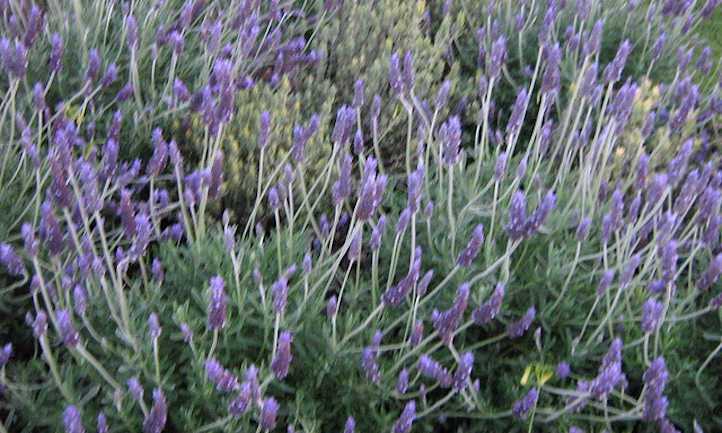
- This lavender variety has distinctive toothed leaves and long-lasting flowers.
- French lavender is more tolerant of heat and humidity compared to English lavender.
- It is commonly used in borders, rock gardens, and as a hedge.
- Popular French lavender cultivars include ‘Gray Lady’, ‘Goodwin Creek Grey’, and ‘Pisa Purple’.
Spanish Lavender (Lavandula stoechas)
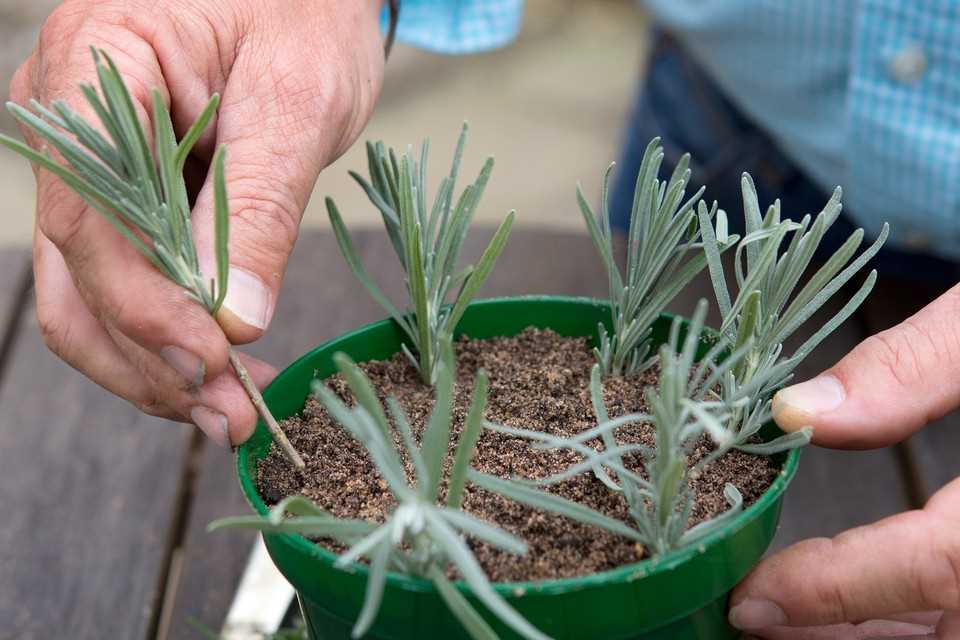
- This lavender variety is characterized by its upright growth habit and showy bracts on top of the flowers.
- Spanish lavender prefers warmer climates and is less cold-hardy compared to other varieties.
- It is well-suited for Mediterranean-style gardens.
- Popular Spanish lavender cultivars include ‘Otto Quast’, ‘Purple Ribbon’, and ‘Helmsdale’.
Other Lavender Varieties
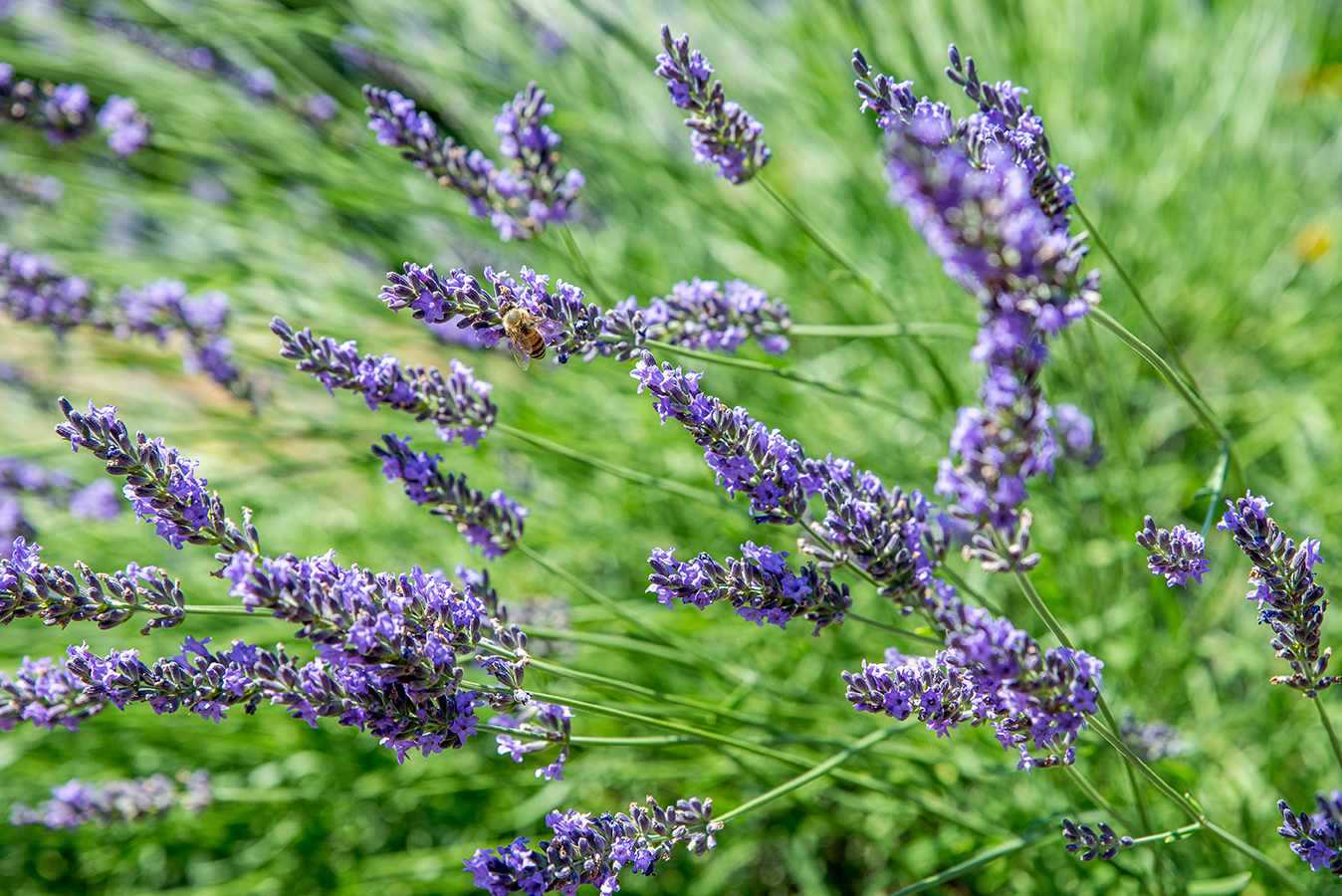
- There are many other lavender varieties available, including hybrid varieties and less common species.
- Some examples include ‘Grosso’ lavender, which is prized for its high oil content, and Lavandin (Lavandula x intermedia) varieties like ‘Provence’ and ‘Super’.
- Each lavender variety has its own unique characteristics, so it’s worth exploring different options to find the right one for your garden.
Remember to consider your specific growing conditions and intended use when selecting lavender varieties. With the right choice, you can enjoy the beauty and fragrance of lavender in your garden for years to come.
Ideal Growing Conditions for Lavender
Lavender is a versatile plant that can thrive in a variety of growing conditions. However, there are a few key factors that contribute to its ideal growth. Here are some tips on creating the perfect environment for your lavender plants:
Sunlight:
Lavender plants require at least 6-8 hours of direct sunlight each day. They thrive in full sun, so be sure to choose a location that receives plenty of sunlight throughout the day. This will ensure healthy growth and vibrant blooms.
Soil:
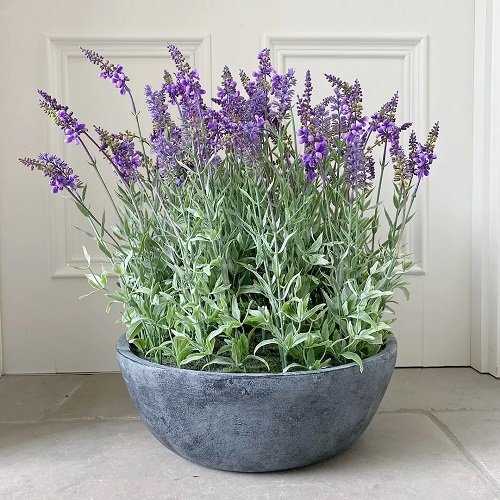
Lavender prefers well-draining soil with a slightly alkaline pH level between 6.5 and 7.5. Avoid heavy clay or waterlogged soils, as they can lead to root rot. Add organic matter, such as compost or well-rotted manure, to improve soil drainage and fertility.
Watering:
While lavender is drought-tolerant and prefers dry conditions, it still needs regular watering, especially during its first year of growth. Water deeply once or twice a week, allowing the soil to dry out between waterings. Be careful not to overwater, as excessive moisture can cause root rot.
Temperature and Humidity:
Lavender thrives in moderate temperatures, ideally between 60°F (15°C) and 85°F (29°C). It can tolerate higher temperatures but may struggle in extreme heat. Lavender prefers low humidity, so avoid areas with high humidity levels or provide proper air circulation.
Pruning:
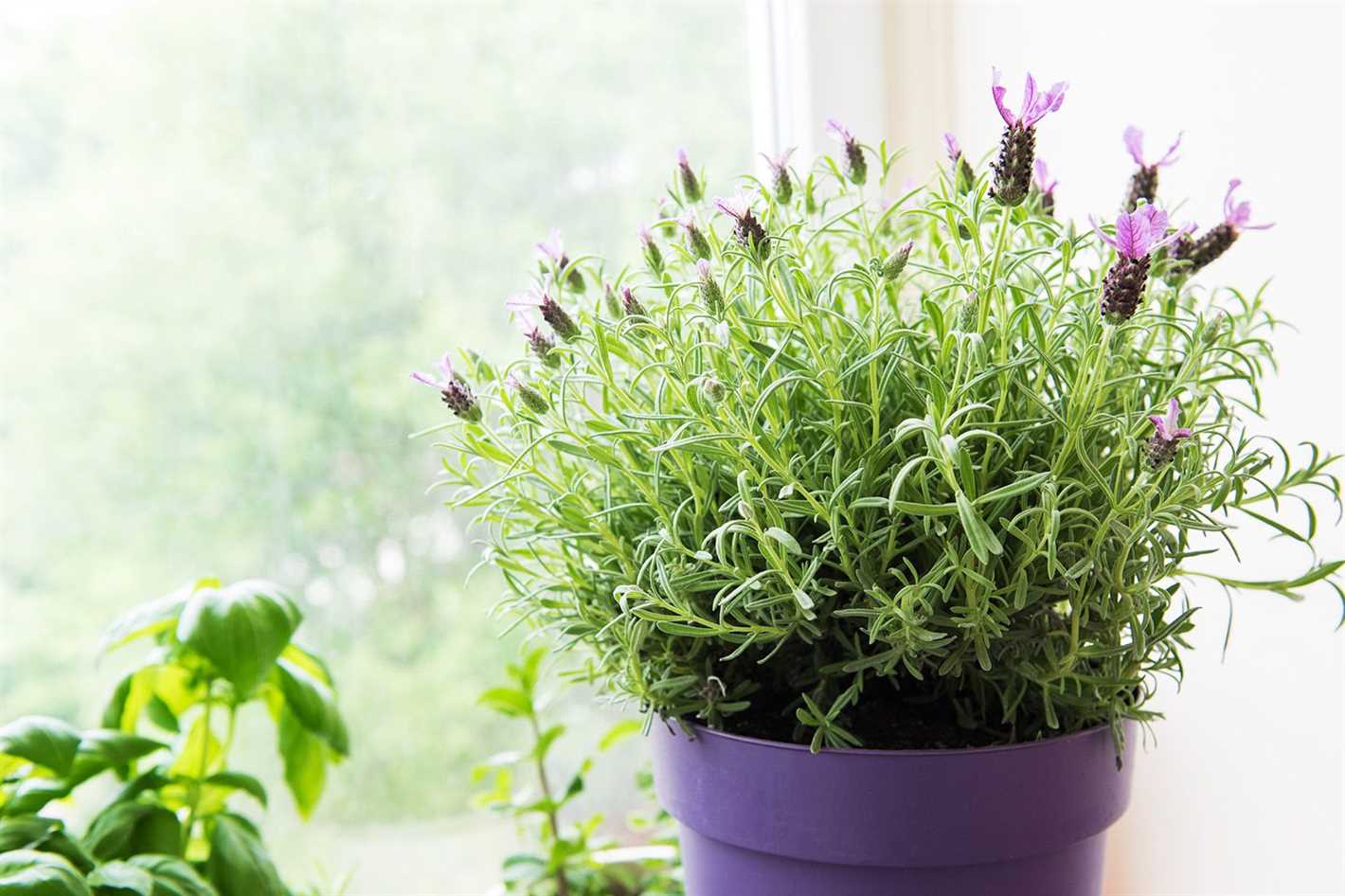
Regular pruning is essential for maintaining the shape and health of lavender plants. Prune in early spring or after flowering to encourage new growth and prevent woody stems. Remove one-third of the plant’s height, cutting just above a set of leaves. This will promote bushier growth and more flowers.
Pest and Disease Control:
Lavender is generally resistant to pests and diseases, but it can still be affected by common issues such as aphids, powdery mildew, and root rot. Monitor your plants regularly and take action at the first sign of any problems. Remove any affected plant parts and treat with organic insecticides or fungicides if necessary.
By providing the ideal growing conditions for your lavender plants, you can enjoy a lush, fragrant garden filled with beautiful blooms. Remember to give them plenty of sunlight, well-draining soil, and proper care to ensure their long-term success.
Propagation Techniques for Lavender
Lavender is a versatile plant that can be propagated using several different techniques. Here are some popular methods for propagating lavender:
1. Seed Propagation
- Collect mature lavender seeds from existing plants or purchase them from a reputable seed supplier.
- Sow the seeds in well-draining soil in trays or pots. Keep the soil moist but not saturated.
- Place the tray or pot in a warm, sunny location, such as a greenhouse or windowsill.
- Transplant the seedlings into individual pots once they have grown several sets of true leaves.
- Continue to care for the seedlings until they are large enough to be planted outdoors.
2. Rooting Cuttings
- Select a healthy, non-flowering stem from an existing lavender plant.
- Cut the stem just below a leaf node, where there is a concentration of growth hormones.
- Strip the leaves from the lower half of the stem.
- Dip the cut end of the stem in rooting hormone to encourage root development.
- Insert the cutting into a pot filled with a mix of peat moss and perlite or vermiculite.
- Keep the soil moist and place the pot in a warm, sunny location.
- Roots should begin to form within a few weeks. Once the cutting has established roots, it can be transplanted into a larger pot or directly into the garden.
3. Layering
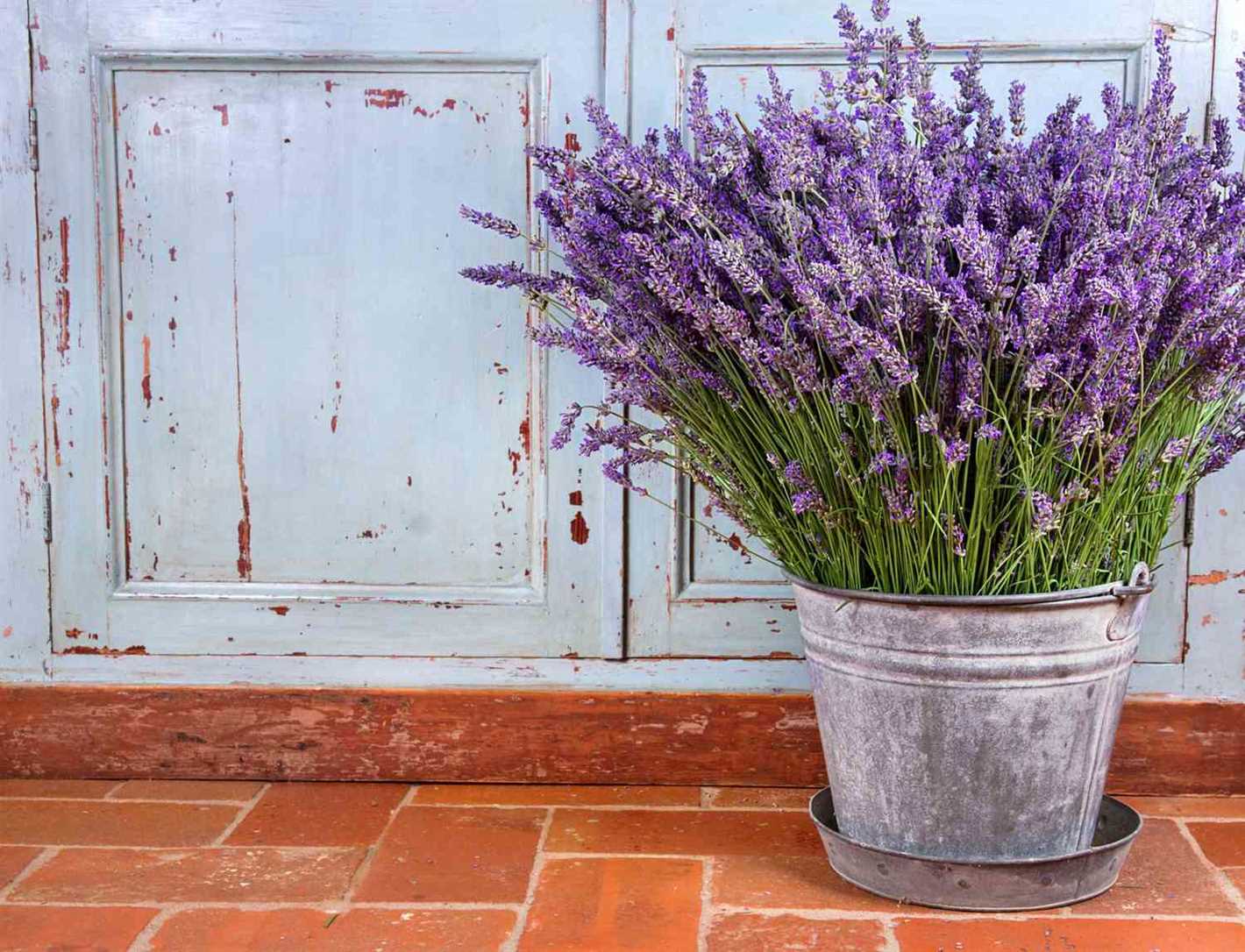
- Select a low-growing stem from an existing lavender plant.
4. Division
Division can be done in early spring or fall when the plant is not actively growing.
- Dig up the established lavender plant, being careful not to damage the roots.
- Replant the divisions in well-draining soil, spacing them apart to allow for future growth.
- Water the divisions thoroughly and continue to care for them as you would any other lavender plant.
By following these propagation techniques, you can easily expand your lavender garden and enjoy the delightful fragrance and beauty of this versatile plant.
Planting and Transplanting Lavender
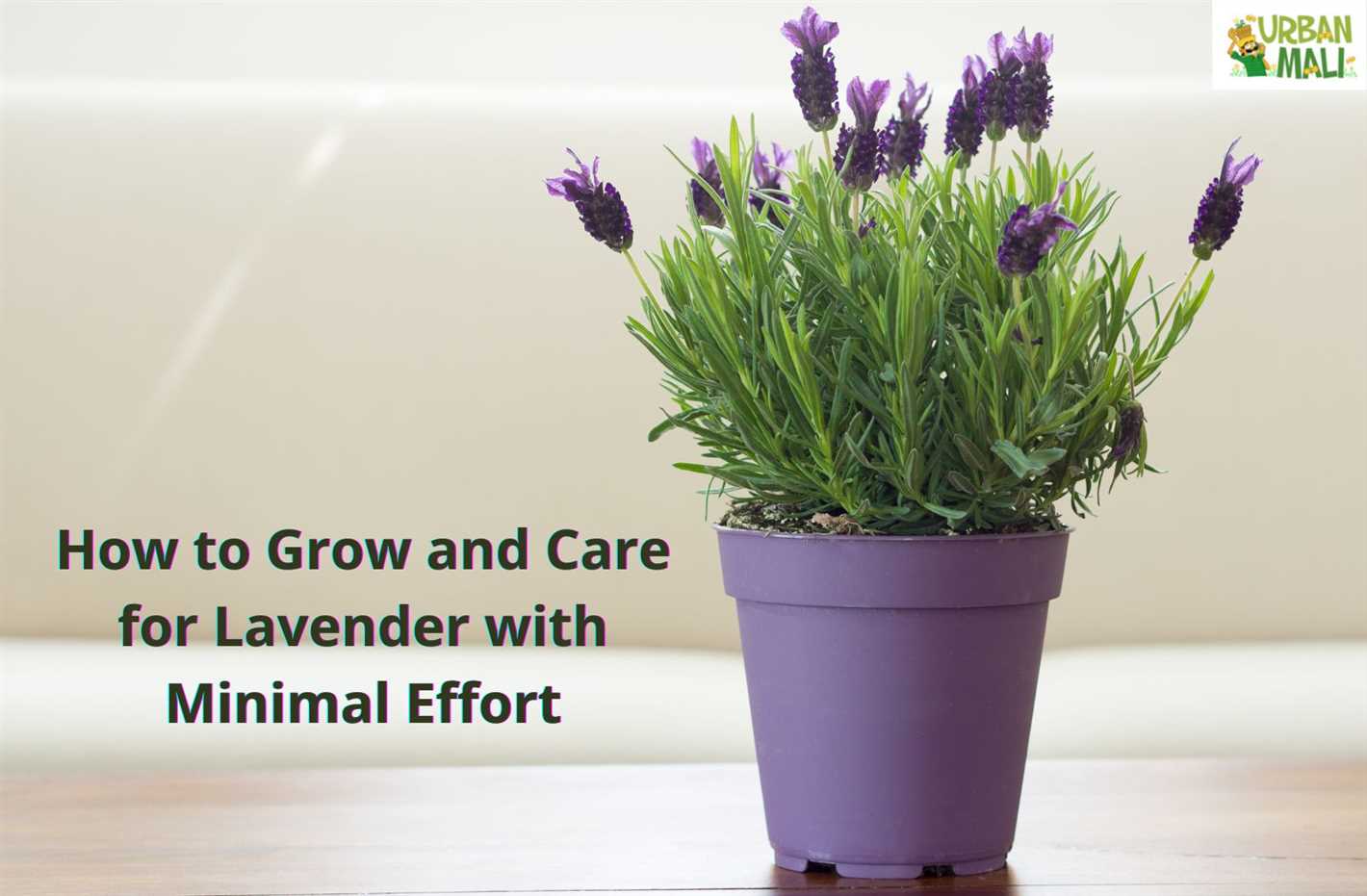
Planting lavender is a relatively easy process that can be done either from seeds or from cuttings. Transplanting lavender can also be done to move an established plant to a new location.
Planting Lavender from Seeds
If you choose to start lavender from seeds, follow these steps:
- Start by filling a seed tray or small pots with a well-draining potting mix.
- Moisten the soil before planting the seeds.
- Sow the lavender seeds on the surface of the soil, gently pressing them in.
- Cover the seeds with a thin layer of soil.
- Place the seed tray or pots in a warm location with plenty of sunlight.
- Keep the soil moist but not waterlogged.
- The seeds should germinate within two to four weeks.
- Once the seedlings have developed their second set of true leaves, they can be transplanted into individual pots or into the garden.
Planting Lavender from Cuttings
Starting lavender from cuttings is a common method and often produces stronger plants. Follow these steps to propagate lavender from cuttings:
- Take 3 to 4-inch cuttings from healthy, non-flowering stems in the early morning.
- Remove the lower leaves from the cuttings, leaving only a few leaves at the top.
- Dip the cut end of the stem in a rooting hormone to increase the chances of success.
- Insert the cutting into a well-draining potting mix or directly into the garden soil.
- Keep the soil slightly moist and provide the cutting with filtered sunlight.
- Within a few weeks, the cutting should develop roots and start to grow.
- Once the plant has developed a strong root system, it can be transplanted to its final location.
Transplanting Lavender
If you need to move a lavender plant to a different location, follow these steps:
- Choose a cloudy day or transplant in the evening to minimize stress on the plant.
- Prepare the new hole or container for planting.
- Water the lavender plant thoroughly a day before transplanting.
- Carefully dig around the root ball, establishing a wide base.
- Lift the plant from the ground or pot, taking care not to damage the roots.
- Place the root ball in the new hole or container, ensuring that the plant sits at the same level as before.
- Fill in the gaps around the root ball with soil, gently firming it down.
- Water the plant deeply to settle the soil.
- Monitor the plant for a few weeks to ensure it is adjusting well to its new location.
Watering and Feeding Lavender Plants
Lavender plants require careful watering and feeding to thrive. Here are some tips to help you properly care for your lavender plants:
Watering
- Water lavender plants deeply but infrequently. Lavender prefers dry soil, so it’s important not to overwater.
- Allow the soil to dry out between waterings. Check the moisture level by sticking your finger about an inch into the soil. If it feels dry, it’s time to water.
- Water lavender plants early in the morning or in the evening to minimize evaporation.
- When watering, aim to moisten the soil around the roots, avoiding wetting the foliage as this can promote disease.
- Consider using a drip irrigation system or a soaker hose to provide water directly to the roots and reduce the risk of fungal diseases.
Feeding
- Lavender plants do not require heavy fertilization. In fact, too much nitrogen can lead to excessive growth and reduced essential oil production.
- In early spring, apply a slow-release, low-nitrogen fertilizer to provide a gentle nutrient boost.
- Avoid fertilizing lavender plants during the late summer and fall, as this can stimulate new growth that is susceptible to winter damage.
- Consider using organic fertilizers, such as compost or well-rotted manure, to provide a natural source of nutrients.
By following these watering and feeding tips, you can ensure that your lavender plants stay healthy and vibrant throughout the growing season.
Pruning and Maintenance of Lavender
Pruning is an important part of lavender care as it helps keep the plant healthy and encourages more vigorous growth. Proper maintenance will ensure that your lavender plants stay compact and bushy, and keep blooming year after year.
When to Prune Lavender
The best time to prune lavender is in early spring, just as new growth starts to emerge. This is usually around March or April, depending on your climate. Avoid pruning lavender in late fall or winter, as the tender new growth can be damaged by frost.
How to Prune Lavender
To prune lavender, start by cutting back about one-third of the plant’s height, taking care not to cut into old wood or remove too much foliage. Use clean, sharp pruning shears and make your cuts just above a leaf node or a set of leaves. This will promote branching and produce a fuller, bushier plant.
Remove any dead or diseased branches, as well as any weeds or debris around the base of the plant. This will help improve airflow and reduce the risk of disease. It’s also a good idea to lightly trim the plant after it has finished blooming in late summer to encourage a second flush of flowers.
Maintenance Tips for Lavender
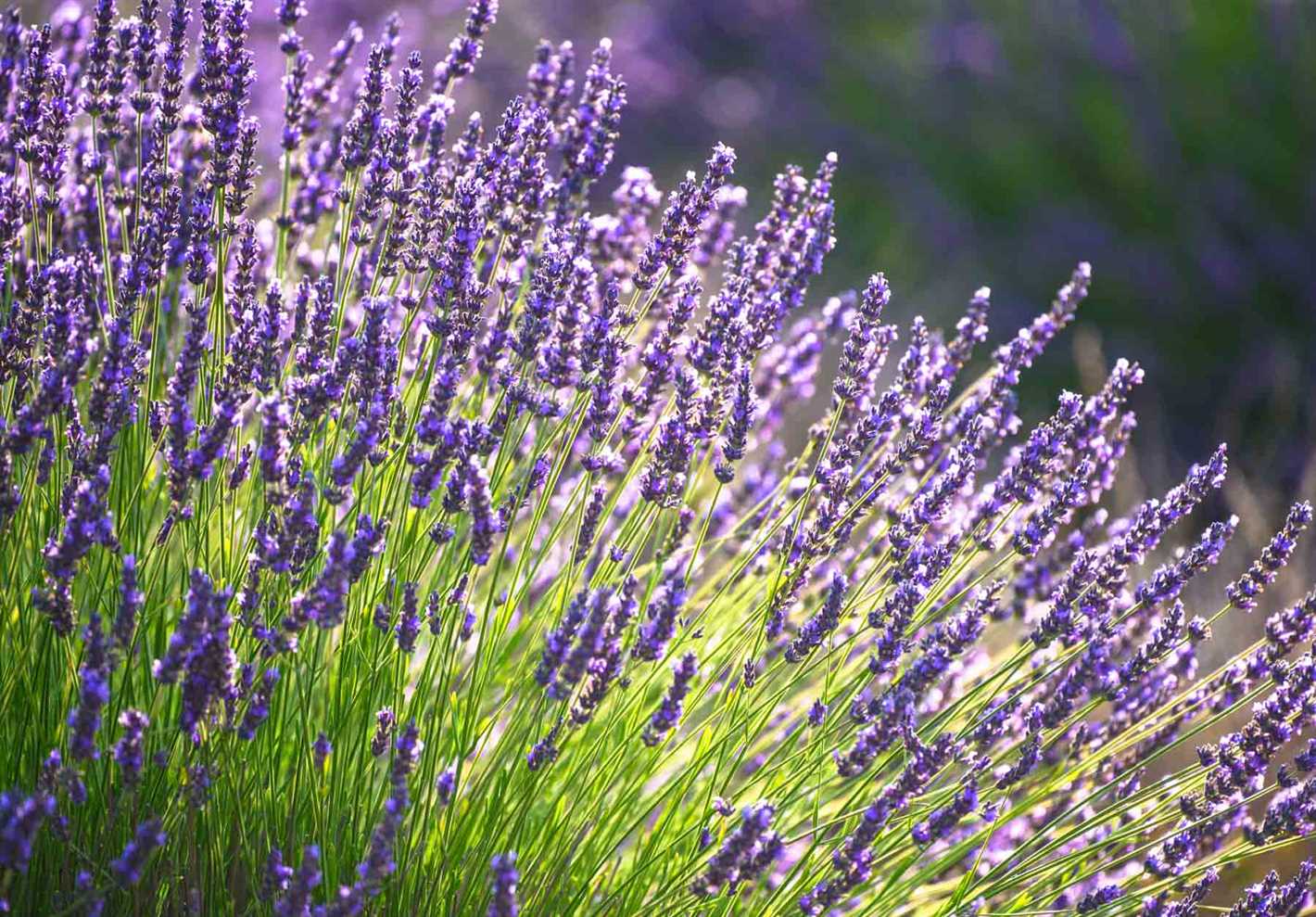
In addition to regular pruning, there are a few other maintenance tasks you can do to keep your lavender plants healthy:
- Water deeply but infrequently – Lavender prefers dry conditions, so avoid overwatering. Instead, water deeply once a week or when the top inch of soil feels dry.
- Provide good drainage – Ensure that your lavender plants are planted in well-draining soil or in raised beds to prevent waterlogged roots.
- Apply mulch – A layer of organic mulch, such as pine needles or straw, around the base of the plant will help conserve moisture and suppress weeds.
- Fertilize sparingly – Lavender is a relatively low-maintenance plant and doesn’t require much fertilizer. If necessary, use a balanced, slow-release fertilizer in early spring.
- Watch for pests – Keep an eye out for common lavender pests like aphids, spider mites, and root rot. If necessary, treat with organic insecticides or fungicides.
By following these pruning and maintenance tips, you can enjoy beautiful, fragrant lavender plants in your garden for many years to come.
Dealing with Common Lavender Pests and Diseases
Lavender plants are generally hardy and resistant to most pests and diseases. However, there are a few common issues that can affect lavender plants. Here are some tips for dealing with common lavender pests and diseases:
Pests
- Aphids: These small insects can damage the leaves and stems of lavender plants. To control aphids, you can use insecticidal soap or neem oil. Alternatively, you can introduce beneficial insects like ladybugs or lacewings to naturally control aphid populations.
- Spider Mites: These tiny pests can cause yellowing leaves and webbing on the plants. To eliminate spider mites, you can spray the plants with a strong jet of water to knock them off, or use insecticidal soap or neem oil.
- Snails and Slugs: These slimy pests can eat holes in the leaves and flowers of lavender plants. To prevent snails and slugs, you can use organic slug bait or set up barriers like copper tape or diatomaceous earth around the plants.
- Root Rot: Overwatering can lead to root rot, which is caused by fungi in the soil. To prevent root rot, make sure the soil is well-drained and only water the plants when the top inch of soil feels dry.
Diseases
- Gray Mold: This fungal disease can cause grayish patches on the leaves and flowers of lavender plants. To prevent gray mold, make sure the plants have good airflow and avoid overhead watering. If gray mold does occur, remove and dispose of the affected plant parts.
- Root Rot: In addition to being caused by overwatering, root rot can also be caused by soil-borne pathogens. To prevent root rot, avoid planting lavender in poorly draining soil and remove any infected plants promptly.
- Lavender Wilt: This disease is caused by a soil-borne fungus and can cause yellowing, wilting, and eventually death of the plants. There is no cure for lavender wilt, so prevention is key. Planting lavender in well-drained soil and avoiding overhead watering can help prevent this disease.
By following these tips and maintaining good plant care practices, you can minimize the risk of pests and diseases affecting your lavender plants.
Harvesting and Using Lavender
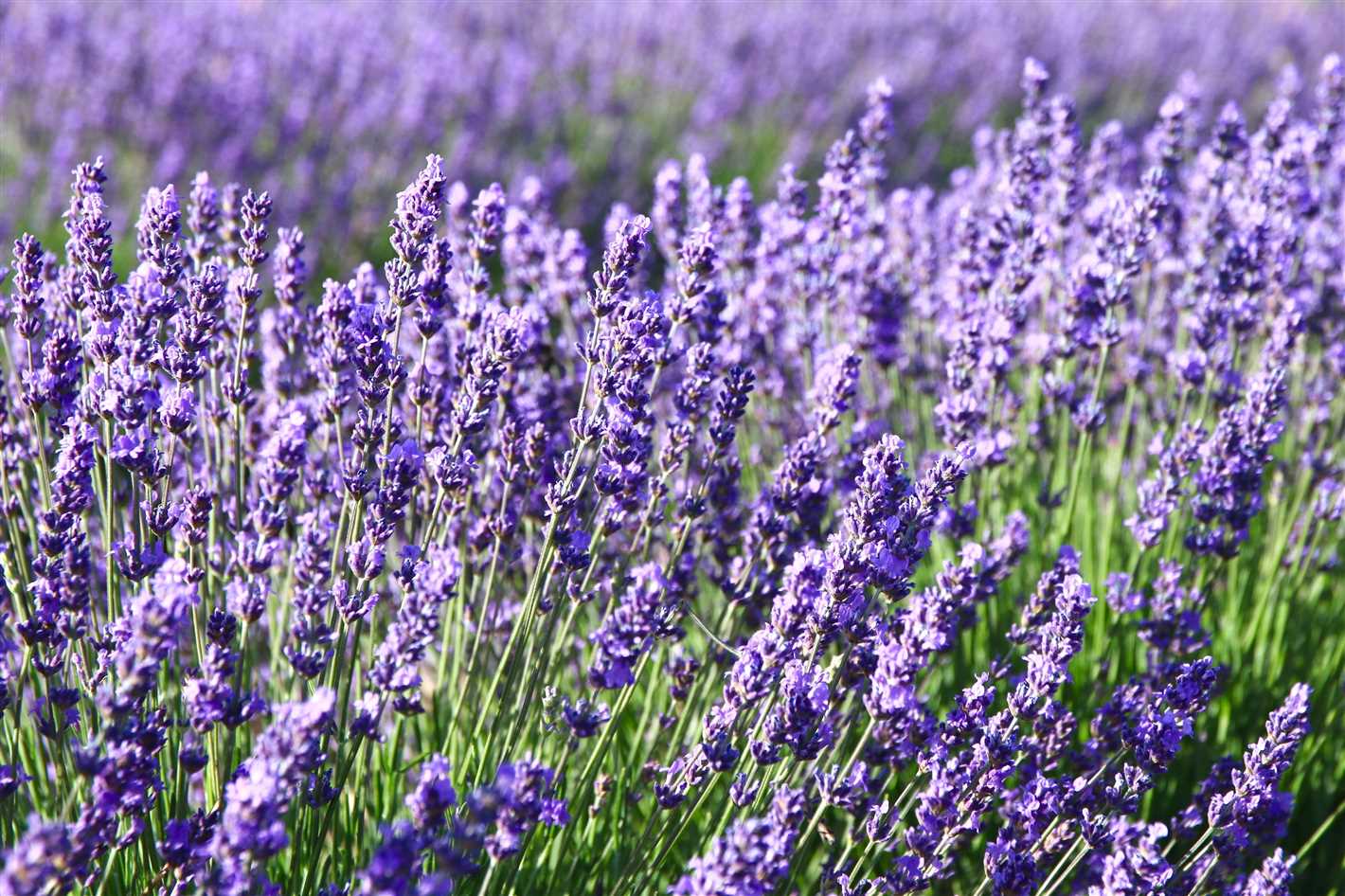
Lavender is a versatile and fragrant herb that can be used in many different ways. Here are some tips for harvesting and using lavender:
Harvesting Lavender
- Harvest lavender when the flowers are in full bloom and the color is vibrant.
- Start by cutting the stems just above the foliage with sharp pruning shears or scissors.
- Harvest in the morning when the essential oils are at their peak.
- Avoid harvesting lavender during or right after rainfall to prevent mold and mildew.
- Leave a few inches of foliage on the plant to ensure regrowth.
- Hang the harvested lavender stems in bundles upside down in a cool, dry, and well-ventilated area to dry.
Using Lavender
Lavender can be used in a variety of ways:
- Culinary Uses:
- Use dried lavender buds to infuse flavor into baked goods, syrups, and teas.
- Add lavender to sugar to create lavender-infused sugar for sprinkling on desserts or in cocktails.
- Aromatherapy and Wellness:
- Create lavender sachets to keep in your closet or drawers for a fresh scent and to repel moths.
- Add a few drops of lavender essential oil to a diffuser for a calming and relaxing aroma.
- Mix lavender oil with carrier oil to create a massage oil for relaxation and stress relief.
- Home and Decor:
- Make dried lavender bouquets or wreaths for decorating your home and adding a natural fragrance.
- Use lavender-infused vinegar as a natural household cleaner or fabric freshener.
- Add dried lavender buds to homemade potpourri for a pleasant aroma.
Storage
Store dried lavender in an airtight container, away from direct sunlight, to preserve its fragrance and flavor for several months.
| Lavender Variety | Flower Color | Common Uses |
|---|---|---|
| English Lavender | Purple | Culinary, Aromatherapy |
| French Lavender | Blue or Purple | Decor, Aromatherapy |
| Spanish Lavender | Pink or Purple | Landscaping, Aromatherapy |
Remember to always do a patch test before using lavender products on your skin to check for any potential allergies or sensitivities.
Questions and Answers:
What is the best way to propagate lavender?
The best way to propagate lavender is through stem cuttings. Take a 3-4 inch long stem cutting from the parent plant and remove any lower leaves. Place the cutting in a pot filled with well-draining soil, keep it moist, and wait for roots to develop.
Can lavender grow in pots?
Yes, lavender can grow in pots. It is important to choose a pot with good drainage and use a well-draining soil mix. Place the pot in a location with full sun, water the plant regularly but avoid overwatering, and prune the plant to keep it in a compact shape.
How often should I water lavender plants?
Lavender plants prefer dry soil conditions, so it is important not to overwater them. Water the plants deeply once every 1-2 weeks, allowing the soil to dry out between waterings. Avoid watering the foliage to prevent diseases.
What is the best time to harvest lavender?
The best time to harvest lavender is when the flowers are in full bloom. Cut the flower stems just above the leaves. For the best fragrance, harvest in the morning after the dew has dried but before the heat of the day.
How do I care for lavender during winter?
Lavender is a hardy plant, but it may need some protection during winter. Mulch the base of the plant with straw or pine needles to insulate the roots. If you live in a colder climate, you can also cover the plant with a breathable fabric or move potted lavender indoors.







